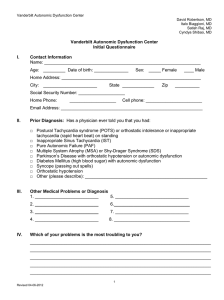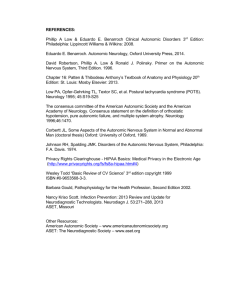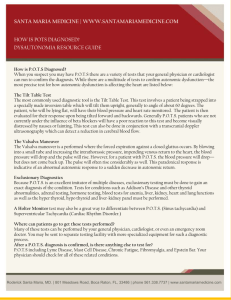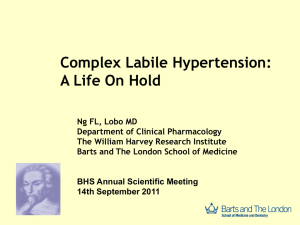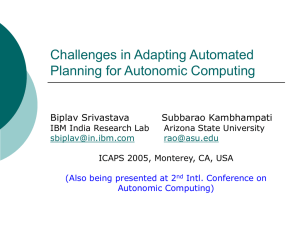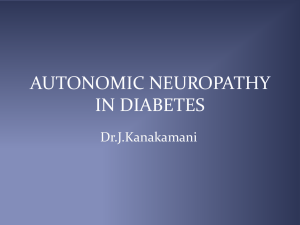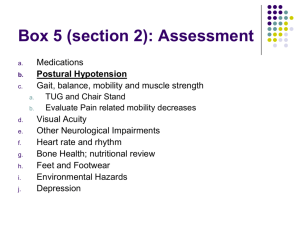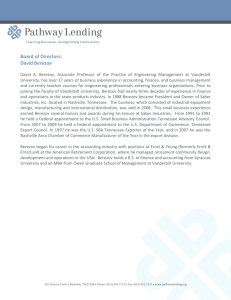novel technologies to manage blood pressure in
advertisement
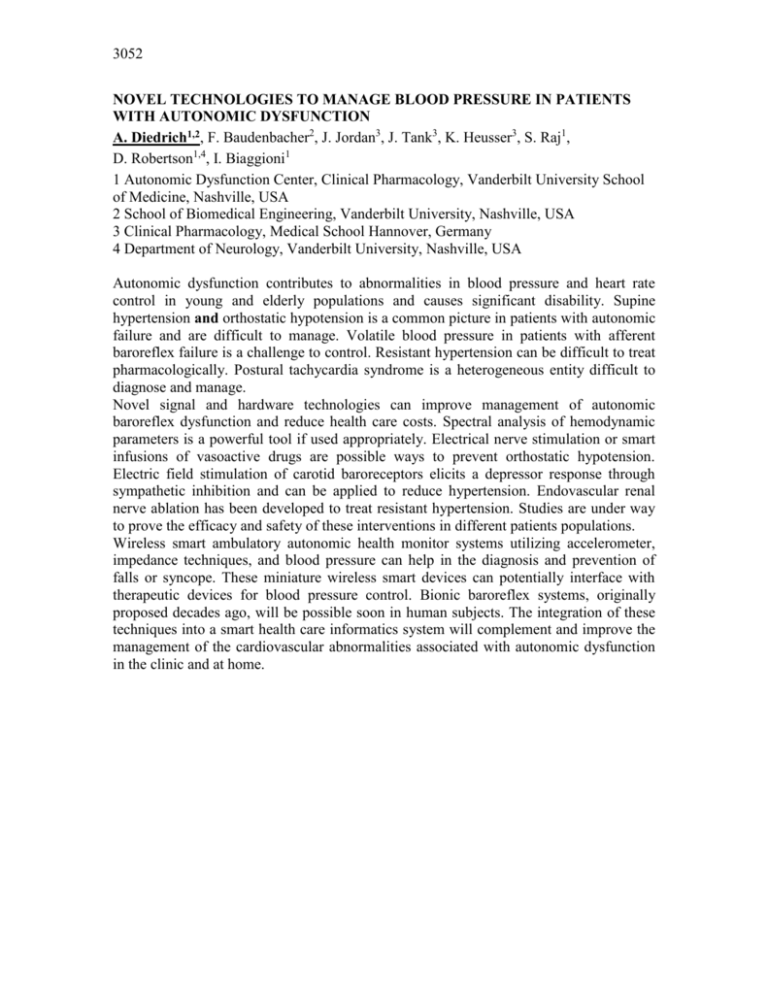
3052 NOVEL TECHNOLOGIES TO MANAGE BLOOD PRESSURE IN PATIENTS WITH AUTONOMIC DYSFUNCTION A. Diedrich1,2, F. Baudenbacher2, J. Jordan3, J. Tank3, K. Heusser3, S. Raj1, D. Robertson1,4, I. Biaggioni1 1 Autonomic Dysfunction Center, Clinical Pharmacology, Vanderbilt University School of Medicine, Nashville, USA 2 School of Biomedical Engineering, Vanderbilt University, Nashville, USA 3 Clinical Pharmacology, Medical School Hannover, Germany 4 Department of Neurology, Vanderbilt University, Nashville, USA Autonomic dysfunction contributes to abnormalities in blood pressure and heart rate control in young and elderly populations and causes significant disability. Supine hypertension and orthostatic hypotension is a common picture in patients with autonomic failure and are difficult to manage. Volatile blood pressure in patients with afferent baroreflex failure is a challenge to control. Resistant hypertension can be difficult to treat pharmacologically. Postural tachycardia syndrome is a heterogeneous entity difficult to diagnose and manage. Novel signal and hardware technologies can improve management of autonomic baroreflex dysfunction and reduce health care costs. Spectral analysis of hemodynamic parameters is a powerful tool if used appropriately. Electrical nerve stimulation or smart infusions of vasoactive drugs are possible ways to prevent orthostatic hypotension. Electric field stimulation of carotid baroreceptors elicits a depressor response through sympathetic inhibition and can be applied to reduce hypertension. Endovascular renal nerve ablation has been developed to treat resistant hypertension. Studies are under way to prove the efficacy and safety of these interventions in different patients populations. Wireless smart ambulatory autonomic health monitor systems utilizing accelerometer, impedance techniques, and blood pressure can help in the diagnosis and prevention of falls or syncope. These miniature wireless smart devices can potentially interface with therapeutic devices for blood pressure control. Bionic baroreflex systems, originally proposed decades ago, will be possible soon in human subjects. The integration of these techniques into a smart health care informatics system will complement and improve the management of the cardiovascular abnormalities associated with autonomic dysfunction in the clinic and at home.
